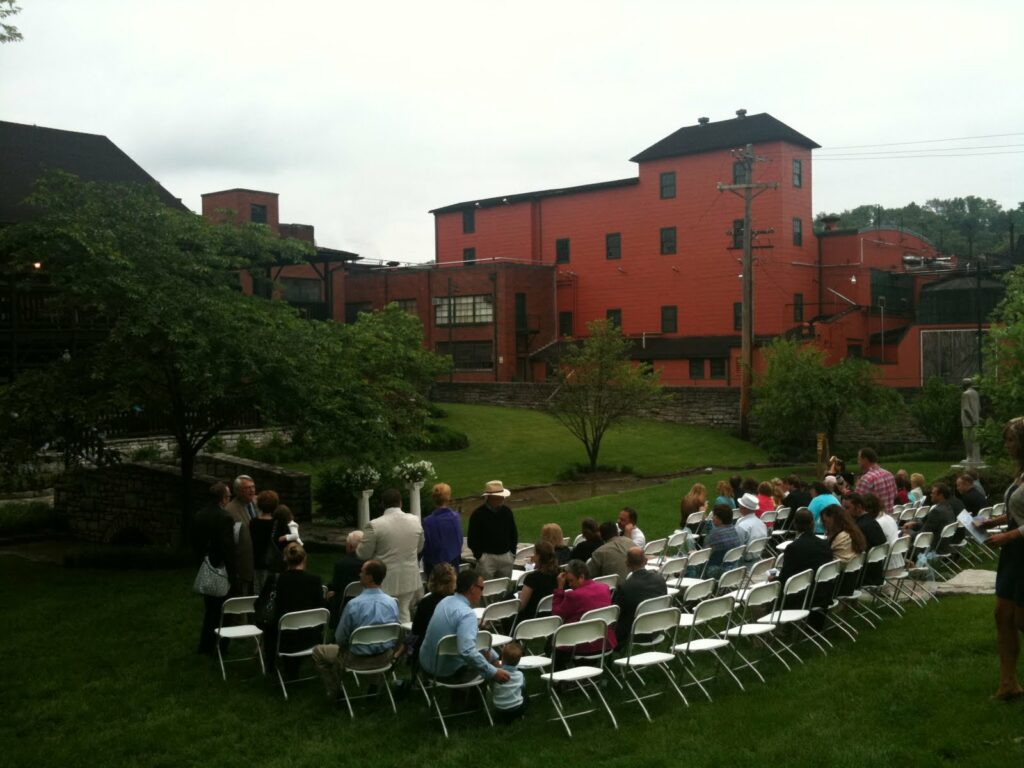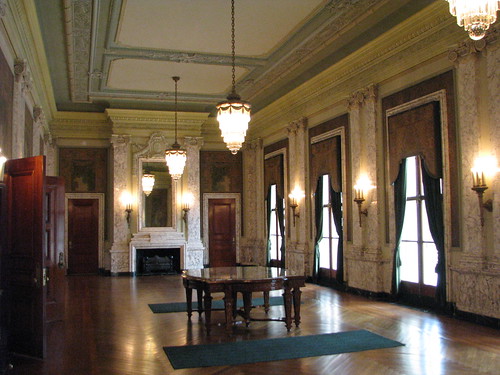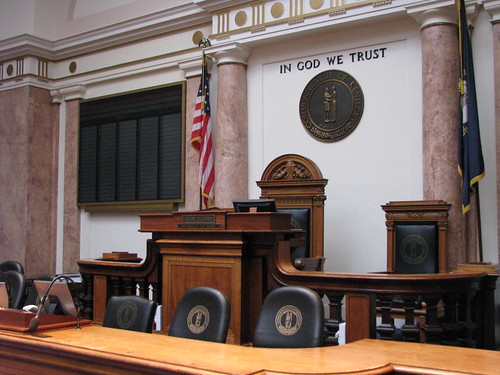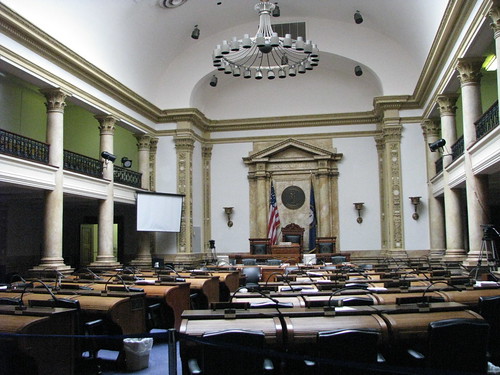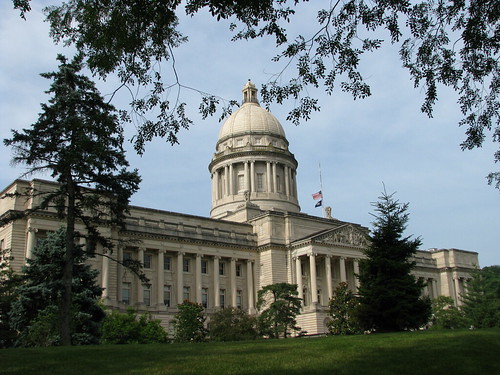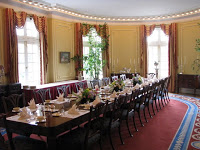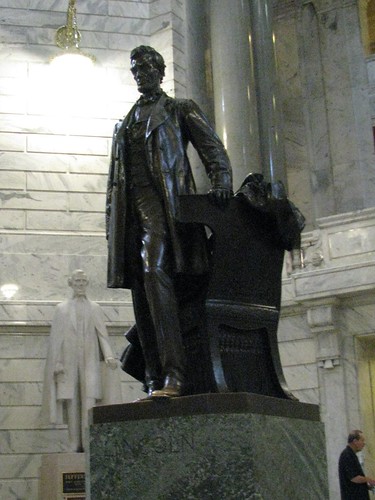 |
| Lincoln Statue in the Rotunda – Kentucky State Capitol, Frankfort |
The likeness of our 16th President, Abraham Lincoln, stands at attention under the rotunda of Kentucky’s state capitol. Last week, the statue celebrated its a centennial only one year after the building itself turned 100 years old.
Almost as soon as the new capitol opened, Gov. Augustus E. Wilson urged his wealthy friend James Breckenridge Speed to fund the erection of the statue commemorating the only President born in Kentucky. With the gift from Speed of $40,000 (equal to approximately $900,000 today), a statue of Lincoln’s likeness was installed directly under the dome of our new state capitol. Speed’s uncle, Joshua Speed, was a confidant of Lincoln. President William Howard Taft was present at the statue’s unveiling.
The bronze statue weighs in at approximately 17,000 pounds when the marble base is included It was designed and cast by Adolf A. Weinman, a German-American sculptor whose work can be seen across the country. Other Lincoln likenesses by Weinman include the seated Lincoln in Hodgenville, Kentucky for which there is a replica on the campus of the University of Wisconsin-Madison.
Of the statue in Frankfort, Lincoln’s left toe extends beyond the edge of the marble base. For years, it has been tradition to rub the President’s shoe for good luck.
The former President is surrounded by statues of four other great Kentuckians: Henry Clay, Epheaim McDowell, Alben Barkley, and Jefferson Davis. Due to weight limits, no other Kentuckians can join their ranks.

